2018 Adventures
Today's Garmin Step Mileage: 14 km
Today we really want to get into the history the Berlin has to offer and the many landmarks associated with WWII. We headed south out of our hotel and towards CheckPoint Charlie.
Checkpoint Charlie (or "Checkpoint C") was the name given by the Western Allies to the best-known Berlin Wall crossing point between East Berlin and West Berlin during the Cold War (1947–1991).
Checkpoint Charlie became a symbol of the Cold War, representing the separation of East and West.
After the dissolution of the Eastern Bloc and the reunification of Germany, the building at Checkpoint Charlie became a tourist attraction. It is now located in the Allied Museum in the Dahlem neighborhood of Berlin.
brenda stanger
104 chapters
16 Apr 2020
Europe - Berlin
Day 2 - Berlin, Germany
Today's Garmin Step Mileage: 14 km
Today we really want to get into the history the Berlin has to offer and the many landmarks associated with WWII. We headed south out of our hotel and towards CheckPoint Charlie.
Checkpoint Charlie (or "Checkpoint C") was the name given by the Western Allies to the best-known Berlin Wall crossing point between East Berlin and West Berlin during the Cold War (1947–1991).
Checkpoint Charlie became a symbol of the Cold War, representing the separation of East and West.
After the dissolution of the Eastern Bloc and the reunification of Germany, the building at Checkpoint Charlie became a tourist attraction. It is now located in the Allied Museum in the Dahlem neighborhood of Berlin.

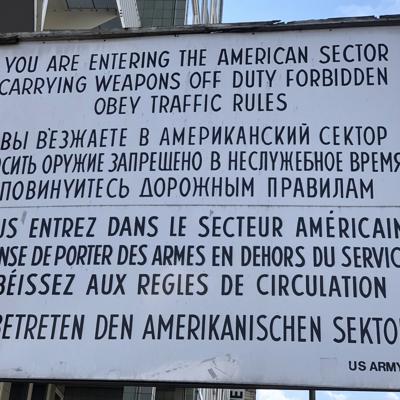
From here we boarded the Red Line Tour route of the Hop-on-Hop-Off Bus. It is great way to get around the city and take in all the sights from a birds eye view. Some of the stops included:
Checkpoint Charlie, Alexanderplatz, Gendarmenmarkt, Brandenburg Gate, Victory Column, Hauptbahnhof train station, and the Topograph of Terror.
At Gendarmenmarkt soldiers once marched here, but today Berliners and tourists stroll across the square. It’s said to be the most beautiful public square in Berlin, and perhaps the most beautiful north of the Alps. The ensemble of the concert house and two church buildings embellished with towers is in perfect harmony. In summer, orchestras play the most beautiful classical melodies at the Classic Open Air, and in winter the square transforms into a winter wonderland with a Christmas market.
The Brandenburg Gate is one of the most iconic sights in today’s vibrant Berlin. More than just Berlin’s only surviving historical city gate, this site came to symbolise Berlin’s Cold War division into East and West – and, since the fall of the Wall, a reunified Germany. Architecturally, the sandstone Brandenburg Gate also represents one of the earliest and most attractive examples of a neo-classical building in Germany.

The Topography of Terror is an outdoor and indoor history museum in Berlin, Germany. It is located on Niederkirchnerstrasse, formerly Prinz-Albrecht-Strasse, on the site of buildings which during the Nazi regime from 1933 to 1945 was the SS Reich Main Security Office, the headquarters of the Sicherheitspolizei, SD, Einsatzgruppen and Gestapo.
The buildings that housed the Gestapo and SS headquarters were largely destroyed by Allied bombing during early 1945 and the ruins demolished after the war. The boundary between the American and Soviet zones of occupation in Berlin ran along the Prinz-Albrecht-Strasse, so the street soon became a fortified boundary and the Berlin Wall ran along the south side of the street. The wall here was never demolished. Indeed, the section adjacent to the Topography of Terror site is the longest extant segment of the outer wall (the longer East Side Gallery section in Friedrichshain being actually part of the inner wall not visible from West Berlin).
The museum had a number of exhibits that walked a visitor through the years of the Nazi rule from 1933 - 1945. It helps a visitor understand how the Nazi's took the necessary steps in gaining control over the country and its neighbouring countries. It all started in 1933 when Hilter came into power. The first step was to gain control of the media. From that point onward it required a well
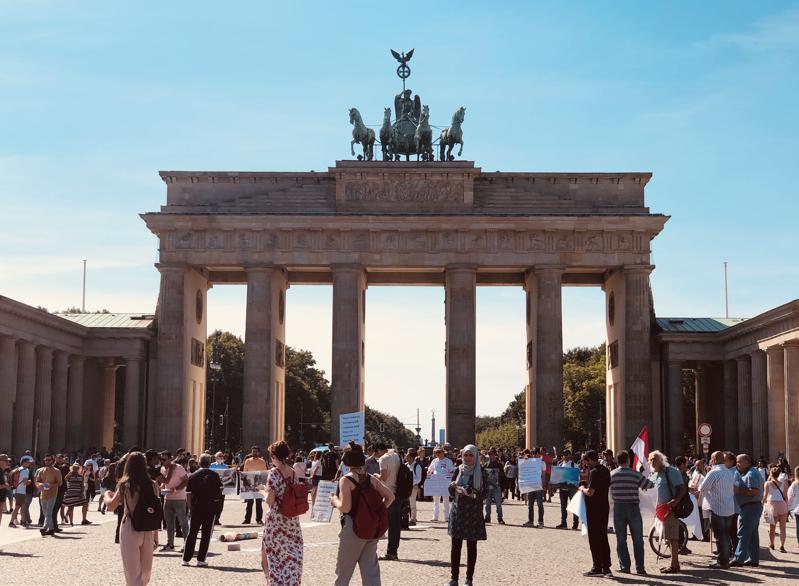
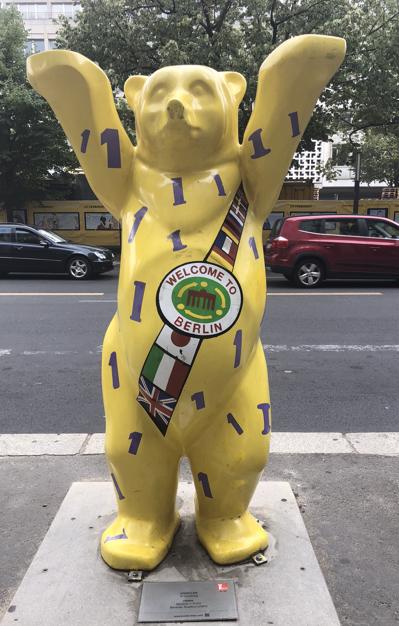


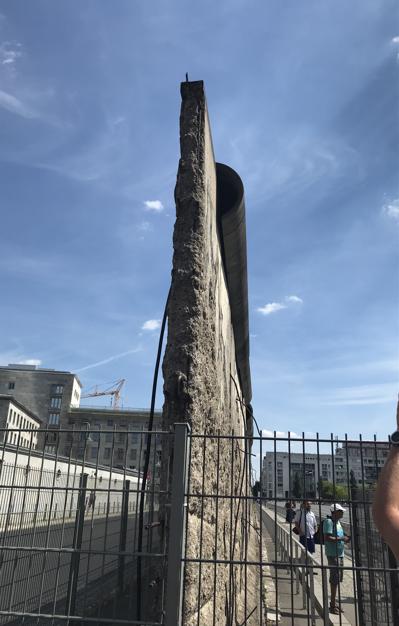
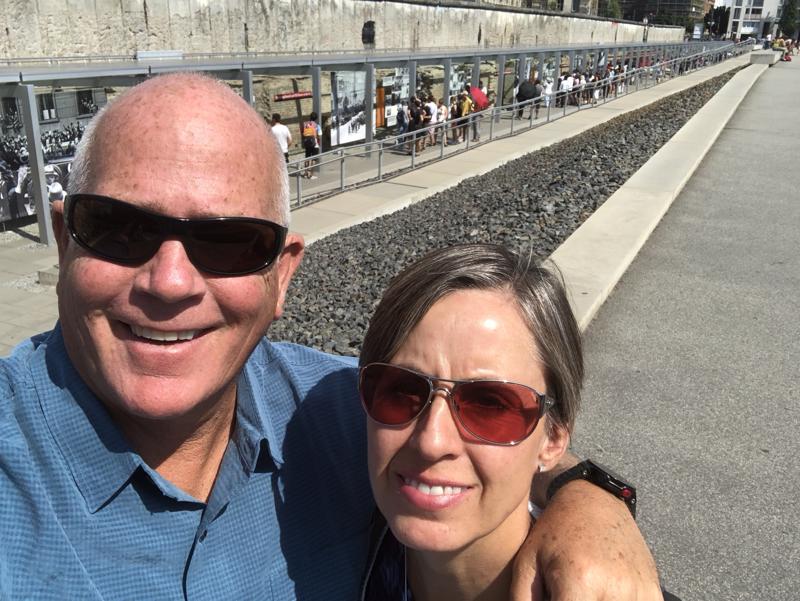
planned strategy for the Nazi's to gain popularity and control of all forms of power within Germany. It had very interesting, yet disturbing, images and historical information pertaining to the Nazi's. It is a must see visit for everyone who comes to Berlin. (not to mention it is free to visit)
After touring around on the Hop-on-Hop off bus we decided to head home for a bit before heading out to check out the local Beer Gardens in Berlin - Prater Beer Garden.
The Prater is held as Berlin's oldest beer garden. Since 1837 beer has been served in this place. Of course this goes along with the traditional beer garden feeling with countless benches next to one another, pretzels and their own make of beer.
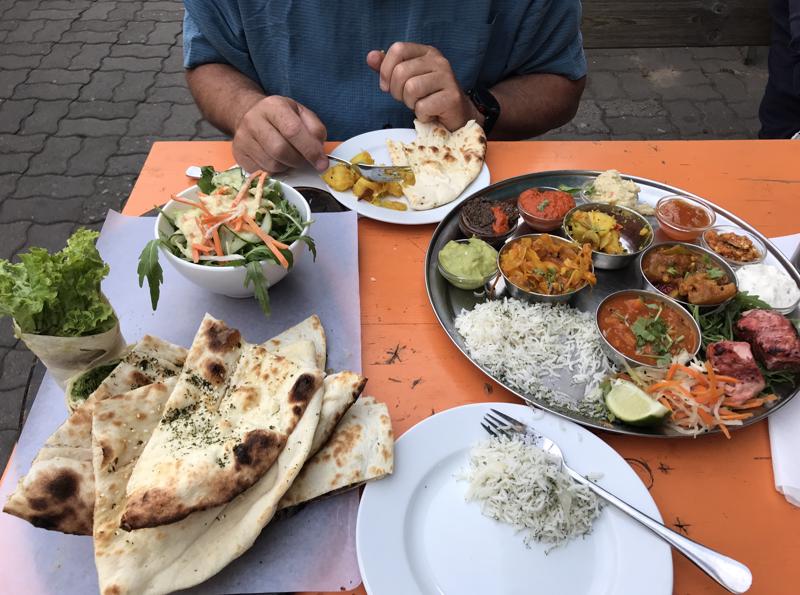

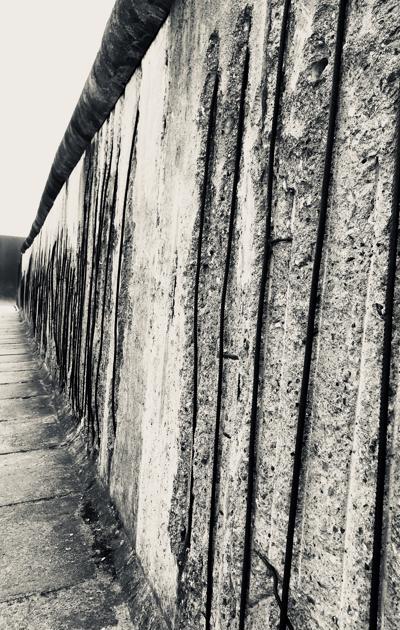
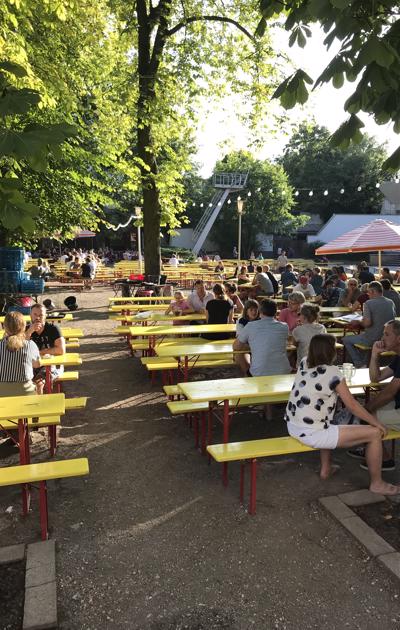

Located directly at Kastanienallee in Berlin-Prenzlauer Berg it often gets crowded as people love to stop by after spending the day in Mauerpark. The typical wooden furniture invites you to enjoy your Pilsner in the shade of the trees. As it gets dark the trees are illuminated with fairy lights which adds a little romance to the atmosphere.
Next to the garden is also a roofed-in restaurant where daily changing soups, Leberkäse, trout with butter almonds or crispy duck with potato dumplings can be found on the menu.
Rick tried the Prater Pils and I sampled their rose wine, topped with a pretzel. It was a nice place to hang out with the locals.
We headed out of the market and turned south heading back toward the river, heading down kastaniemallee. It is a road that is lined with shops and restaurants. We came across a place that was literally spilling out into the street with all the business and people waiting to get a seat. It was an Indian restaurant with great looking dishes in front of people. Pretty reasonable as well. We at a "Tasting Dish" for 2 for $20 Euros. Tons of food and very flavourful. As it turns out it was completely vegetarian. We honestly didn't even realize it was a vegetarian restaurant until we were halfway through our meal. They did a wonderful job of the presentation and flavours that you didn't even miss the meat.
Another wonderful day in Berlin. One more day to fully explore and discover this history filled city.
1.
Year of Travel
2.
Sosua - Dominican Republic
3.
Our Adventures So Far...
4.
Beach Life
5.
Our Favourite Restaurants in Sosua
6.
Fun with Friends
7.
Sosua Continued
8.
Sun, Surf and Sand
9.
Samana Peninsula
10.
Sosua Highlights
11.
USA Road Trip
12.
Texas
13.
Texas
14.
Louisiana - NOLA
15.
Louisiana - NOLA
16.
Louisiana - NOLA
17.
Alabama
18.
Alabama to Tennesse
19.
Tennesse - Nashville
20.
Tennesse - Nashville
21.
Tennesse - Nashville
22.
Tennesse - Memphis
23.
Tennesse - Memphis
24.
Tennesse - Memphis
25.
Summer at Home
26.
Westcoast Adventures
27.
Europe
28.
Europe - Budapest
29.
Europe - Budapest
30.
Europe - Vienna
31.
Europe - Vienna
32.
Europe - Vienna
33.
Europe - Prague
34.
Europe - Prague
35.
Europe - Prague
36.
Europe - Berlin
37.
Europe - Berlin
38.
Europe - Berlin
39.
Europe - Salzburg
40.
Europe - Salzburg
41.
Europe - Salzburg
42.
Europe - Salzburg
43.
Europe - Salzburg
44.
Europe - Innsbruck
45.
Europe - Innsbruck
46.
Europe - Bad Ragaz
47.
Europe - Bad Ragaz
48.
Europe - Lindau
49.
Europe - Lindau
50.
Europe - Fussen
51.
Europe - Fussen
52.
Europe - Freising and Munich
53.
San Francisco
54.
San Francisco
55.
San Francisco
56.
San Francisco
57.
San Francisco
58.
San Francisco
59.
Canada Road Trip
60.
On the Road to Ontario
61.
Ontario - Thunderbay
62.
Ontario - Thunderbay
63.
Ontario - Thunderbay
64.
Ontario - Toronto
65.
Ontario - Ottawa
66.
Ontario - Ottawa
67.
Quebec - Montreal
68.
Quebec - Montreal
69.
Quebec - Montreal
70.
Quebec - Quebec City
71.
Quebec - Quebec City
72.
Quebec - Sainte Flavie
73.
New Brunswick - Bathurst
74.
New Brunswick - Shediac
75.
New Brunswick - Shediac
76.
Prince Edward Island - Charlottetown
77.
Prince Edward Island - Road trip
78.
Prince Edward Island - Charlottetown
79.
Prince Edward Island - More exploration
80.
Nova Scotia - Halifax
81.
Nova Scotia - Halifax
82.
Nova Scotia - Halifax
83.
Nova Scotia - Sydney
84.
Newfoundland - Channel-Port
85.
Newfoundland - Rocky Harbour
86.
Newfoundland - Rocky Harbour
87.
Newfoundland - St. John's
88.
Newfoundland - St. John's
89.
Newfoundland - St. John's
90.
Newfoundland - St. John's
91.
Newfoundland - St. John's
92.
Newfoundland - Travelling
93.
Nova Scotia - Sydney
94.
New Brunswick - Saint John
95.
Maine - Portland
96.
Massachessets - Cape Cod via Boston
97.
Massachusetts - Cape Cod
98.
Massachusetts - Cape Cod
99.
Pennsylvania - Clearfield
100.
Illinois - Chicago
101.
Illinois - Chicago
102.
Illinois - Chicago
103.
Heading Home
104.
Our Year at a Glance